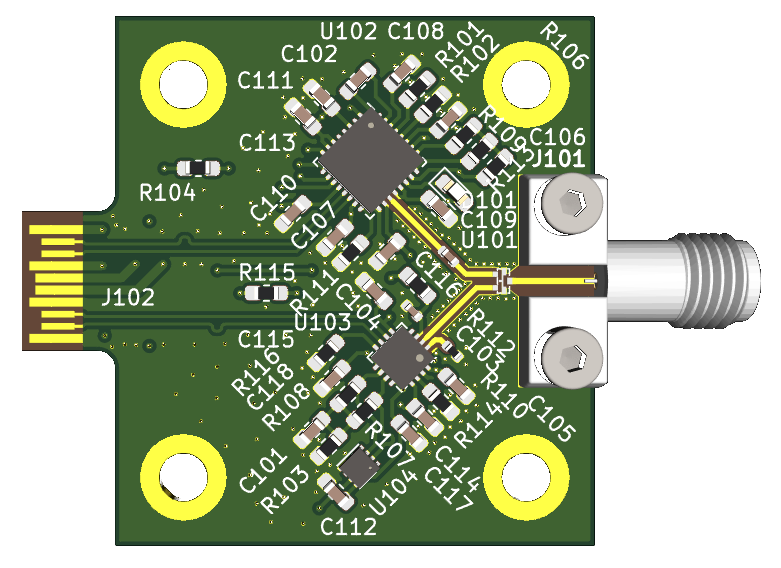Hi folks,
I thought that after building my first standalone TDR (now called TDR-G2), I should build another one which would fix its issues. The main issues were:
- High noise floor
- Limited bandwidth (about 2 or 2.5 GHz)
- Limited risetime (around 270 ps)
- Slow sampling
- Very bad SMA connector and its footprint (almost completely correctable by SOL calibration)
- Many other issues caused by focus on low price
This time, the reflectometer will use ADCMP582 as one-bit sampler. Because its threshold will be controlled by a DAC, it will be possible to approximate the measured value. See Ted Yapo's oscilloscope (here on HaD) or loxodes's TDR (on GitHub) to see how well it works.
The pulse generator used is MAX3798 which can generate edges with 26ps risetime. Its modulation current can be set in 512 steps using internal DAC, thus allowing for setting the output RF power (if you have ever been measuring nonlinear devices with VNA, then you know how useful it can be). If the range proves to be too narrow, PE4306 or similar attenuator may be added later. This driver should be able to operate into 50 Ohm network without any funny impedance matching.
The used SMA connector is Rosenberger SMA, which is reasonably expensive nad should be more than good enough for this application.
The coplanar waveguides are not ideal, mostly due to the fact that there is one coplanar going from the connector, then transitioning into coplanar going into the splitter, then into the two coplanars going into the generator and sampler... It is impossible to reduce reflections to zero (also because I do not have nor can use any EM solver). However, the reflections should be small enough to be suppressable by SOL(T) calibration, which was already proven in the TDR-G2 where a cheap chinese SMA was used along with very bad footprint.
The board was sent to JLCPCB for manufacturing. The stackup is shown on image below. It is the Isola 7628 4-layer stackup as listed on JLCPCB website. Manufacturing cost for 10 pcs of 1 mm 4-layer impedance driven 7628 stackup board was $14 not including shipping fee. The board finish is HASL, because I do not prefer ENIG (see my microwave tips to see why it isn't good for microwave devices). And it makes the boards 3 times cheaper. The shipping fee was $7 for China post.
The board should fit into SFP/SFP+ connector. Its dimensions are 35x37.5 mm, thus not fitting into standard cage. Sorry for that, but it was not my intention to fit int othe cage. Mounting holes are for M3 screws.
Sidenote: You may be interested in seeing this application note.


ISOLA 7628 0.2 mm stackup coplanar (Er = 4.3):
W = 0.315 mm
G = 0.14 mm
or
W = 0.365 mm
G = 0.25 mm
ISOLA 2313 0.1 mm stackup coplanar (Er = 3.64):
W = 0.21 mm
G = 0.162 mm
 MS-BOSS
MS-BOSS
Discussions
Become a Hackaday.io Member
Create an account to leave a comment. Already have an account? Log In.